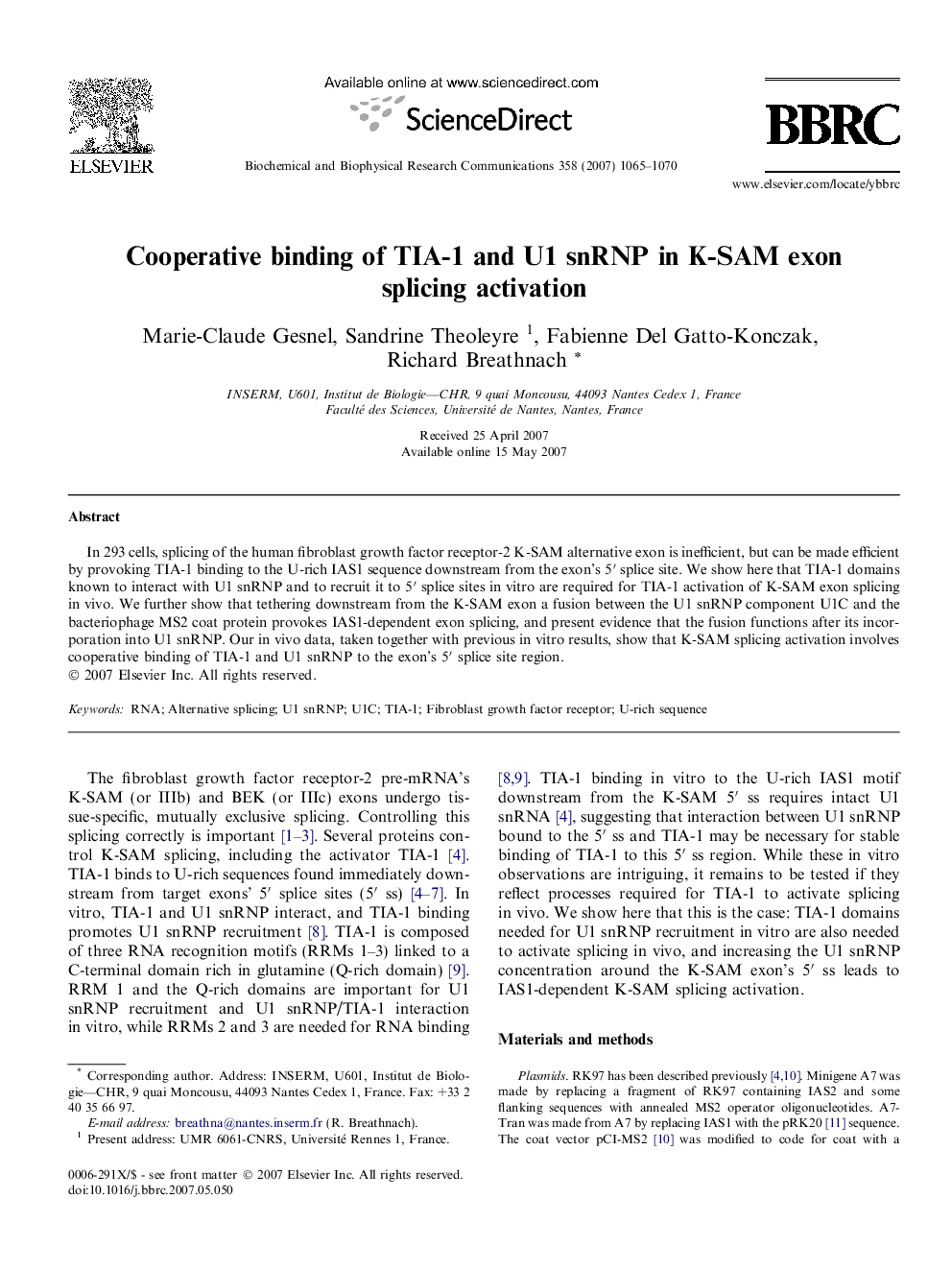| Article ID | Journal | Published Year | Pages | File Type |
|---|---|---|---|---|
| 1937767 | Biochemical and Biophysical Research Communications | 2007 | 6 Pages |
Abstract
In 293 cells, splicing of the human fibroblast growth factor receptor-2 K-SAM alternative exon is inefficient, but can be made efficient by provoking TIA-1 binding to the U-rich IAS1 sequence downstream from the exon's 5â² splice site. We show here that TIA-1 domains known to interact with U1 snRNP and to recruit it to 5â² splice sites in vitro are required for TIA-1 activation of K-SAM exon splicing in vivo. We further show that tethering downstream from the K-SAM exon a fusion between the U1 snRNP component U1C and the bacteriophage MS2 coat protein provokes IAS1-dependent exon splicing, and present evidence that the fusion functions after its incorporation into U1 snRNP. Our in vivo data, taken together with previous in vitro results, show that K-SAM splicing activation involves cooperative binding of TIA-1 and U1 snRNP to the exon's 5â² splice site region.
Related Topics
Life Sciences
Biochemistry, Genetics and Molecular Biology
Biochemistry
Authors
Marie-Claude Gesnel, Sandrine Theoleyre, Fabienne Del Gatto-Konczak, Richard Breathnach,
